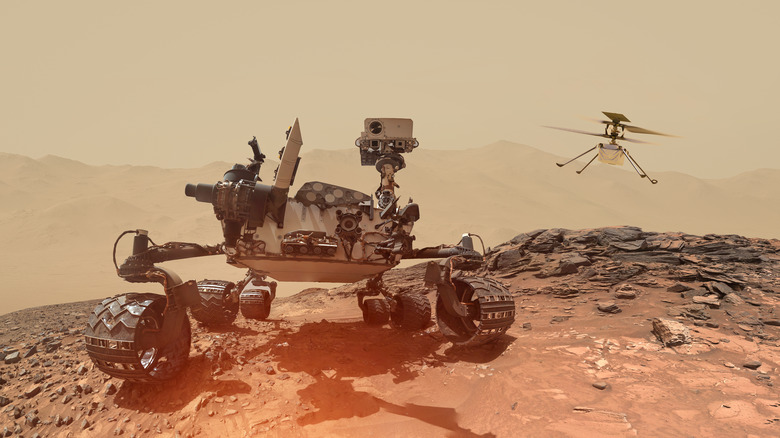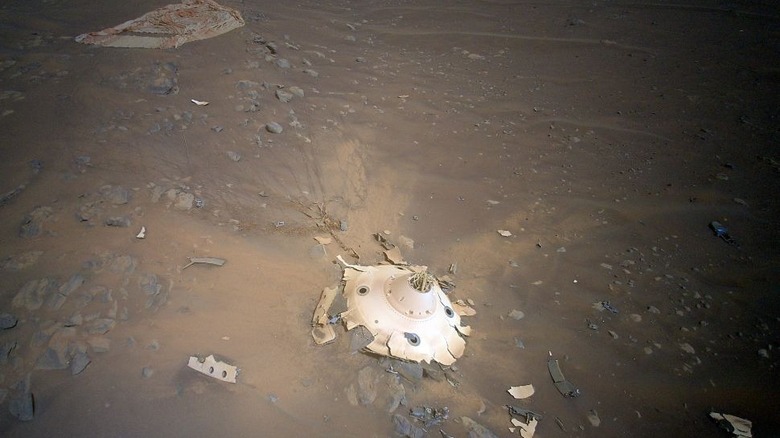Why Mars Has 15,000 Pounds Of Trash
The human race is good at many things. It can build life-saving artificial organs and produce emotionally-charged works of art, music, books, and film that make us laugh, cry and gasp. We created artificial intelligence (because natural intelligence wasn't good enough?), erected the tallest structures, and prepared the most sumptuous meals from the humblest of ingredients.
But in doing so, we also make 11.2 billion tons of garbage every year. In the United States alone, each person generates 4.9 pounds of trash every single day. It's a staggering number that worsens with each passing year. However, our ability to litter the landscape isn't beholden to just the Earth. Through grit and determination, we launched ourselves into the wilds of space, planted a flag on the Moon in 1969, and dropped a robot on Mars in 1997.
All along the way, we've left trash ... lots and lots of trash. Since man's first lunar sleepover, we've been leaving flags, boots, human waste collection bags, a buggy, a sculpture, and dirty wet wipes on the surface of the Moon. There are also tons of modules and probes that have been left behind or intentionally crashed into the surface. In fact, there's an estimated 400,000 to 500,000 pounds (200 to 250 tons) of trash sitting on the Moon, and with our impending return to Earth's nearest celestial neighbor upon us — Artemis I is set to launch next week (if all the stars align) — we'll undoubtedly be depositing even more trash.
Waste not want not
NASA landed Pathfinder in Ares Vallis, an outflow channel on Mars' surface, on July 4, 1997. However, we have been launching missions to Mars since the 1960s. The first artificial object to hit the surface was the Russian-made Mars 2 Orbiter in 1972, but only because it crashed after its braking thrusters failed while attempting to land. Since then, we have put 18 other objects on Mars.
For every one of those scurrying robots, a plethora of discarded debris came along for the ride. While rockets may have gotten the little guys from Earth to Mars, the rovers are tucked away inside modules when making the actual descent to the surface. Each of these modules comes with a heat shield and a landing system (with a parachute), so the rovers don't go splat. All of this hardware eventually gets jettisoned across the landscape and summarily left behind (via Space.com), as there's currently no trash pickup on Mars.
Nine of the 18 rovers are no longer active, having either breaken down or simply run out of juice, and will be sitting there forever ... or whenever the first colonies begin making trash runs. Additionally, there have been two confirmed crashes, with four others thought to have met the same fate. While the rovers are there to collect and gather samples and data, they also left bits and pieces behind. For instance, parts of Curiosity's aluminum wheel broke off, and Perseverance dropped a used-up drill bit (via Space.com).
According to Space.com, the total weight of everything sent to Mars is approximately 22,000 pounds. However, if you take away 6,306 pounds for the equipment that's still functioning (three rovers and one lander), you're left with nearly 15,700 pounds of waste sitting on the surface of the red planet.

